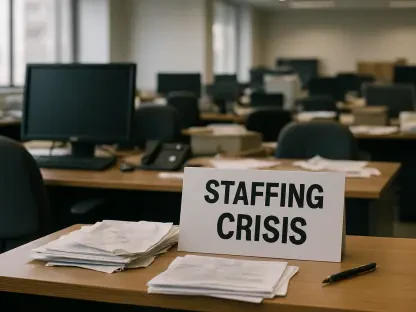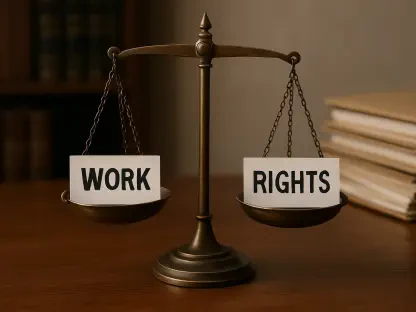In a recent tribunal case, a former NHS worker, Lorna Rooke, found herself at the center of a legal controversy that many might have initially overlooked. Winning approximately £30,000 after being compared to the infamous Star Wars villain Darth Vader by a coworker using a Star Wars-themed Myers-Briggs test, Rooke’s situation underscores the sometimes hidden legal ramifications of casual workplace interactions. The judge deemed the comparison insulting, casting a spotlight on the broader implications of workplace culture and employee well-being. This case directly questions the balance between fostering a lighthearted work environment and safeguarding against potential harm and misunderstanding. The verdict also holds a cautionary lesson for HR professionals, highlighting their pivotal role in ensuring that workplace practices do not inadvertently lead to legal liabilities. While many of Rooke’s claims, such as constructive unfair dismissal and direct disability discrimination, were dismissed, the case amplifies the need for a thorough understanding and management of employee interactions and communications to avoid pitfalls.
The Role of HR and Legal Implications
HR professionals find themselves navigating an increasingly complex landscape where workplace culture intersects with legal responsibilities. Experts like Gemma Dale and Emily Bennett have shed light on the implications of the Rooke case, emphasizing the importance for HR personnel to keep a vigilant eye on workplace behavior. Their analysis stresses not only the legal necessities but also the ethical responsibilities HR holds in these contexts. The upholding of Rooke’s claim of detriment due to protected disclosures related to health and safety serves as a reminder of the critical role HR must play. They are charged with the duty of investigating and using appropriate responses to preserve a healthy workplace environment. This responsibility further extends to addressing protected disclosures effectively, as they carry significant legal weight. The insights offered by HR experts emphasize the need for ongoing training and education within HR departments to ensure that professionals are equipped with the knowledge required to handle such situations, not just reactively but proactively.
Meanwhile, this case highlights a growing awareness of the legal ramifications surrounding workplace culture in HR departments. The evolution of employee-related legal claims necessitates a more profound understanding of how everyday interactions can have severe consequences. It is imperative for HR professionals to cultivate an environment that not only possesses written policies but actively enforces them. The essence of maintaining a supportive culture is crucial, ensuring that employees feel secure in raising concerns and that these concerns are handled with sensitivity and legal acumen. As the workplace becomes a highly scrutinized legal arena, HR’s role in bridging the gap between management practices and employee rights proves more vital than ever.
Maintaining an Inclusive and Supportive Workplace
The Rooke case underlines the importance of creating an inclusive workplace where policies and culture align seamlessly to protect employee well-being. Emily Bennett has particularly pointed out the need for genuine engagement in well-being assessments, emphasizing the shift from mere administrative exercises to meaningful interactions. To achieve this, robust action planning, combined with thorough documentation, is critical. Such initiatives not only promote clarity but also provide legal protection and transparency. It is essential for companies to instill a culture where policies are not just words on paper but are actively practiced and upheld across all levels of the organization. This proactive approach helps safeguard employee well-being and effectively tackles concerns that could arise.
Organizations must prioritize creating an atmosphere where trust is fostered, and employees feel empowered to voice their concerns without the fear of retaliation. Providing appropriate channels for communication and feedback, accompanied by prompt and appropriate responses, further fortifies an environment of trust and inclusion. Defensive and discriminatory actions often arise from cultural inconsistencies and unaddressed grievances. Therefore, it is crucial for companies to invest in regular training and audits to ensure their workplace culture is in harmony with their legal responsibilities. By embedding these practices deep within the company fabric, potential legal challenges can be mitigated, thus preserving both employee satisfaction and organizational integrity.
Navigating the Future of Workplace Culture
In a recent tribunal case, Lorna Rooke, a former NHS worker, became central to a legal dispute that many initially viewed as inconsequential. Rooke won about £30,000 after a coworker compared her to the Star Wars villain Darth Vader using a Myers-Briggs test referencing Star Wars, illuminating the legal consequences of seemingly innocent workplace remarks. The judge labeled the comparison as insulting, highlighting significant concerns around workplace culture and employee wellness. This verdict questions the balance between promoting an informal work atmosphere and protecting employees from potential harm or misunderstandings. For HR professionals, it serves as a warning, emphasizing their crucial role in ensuring workplace practices avoid legal liabilities. Though many of Rooke’s claims, including constructive unfair dismissal and direct disability discrimination, were dismissed, the case underscores the importance of effectively managing employee interactions and communications to prevent legal risks.









